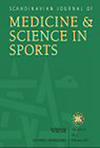怎样才能登上领奖台?顶级自行车手在大型巡回赛中的功率输出和心率衍生的比赛需求。
IF 3.8
2区 医学
Q1 SPORT SCIENCES
引用次数: 0
摘要
很少有证据表明,在大巡回赛(环意大利、环法、环法和España)中获得最高位置所需的要求。使用功率输出(PO)和心率(HR)数据,我们旨在比较大巡回赛中成功(至少前5名)和不太成功(至少前15名)自行车手的比赛需求。我们确定了在大巡回赛中,我们可以比较获得前5名(Top)的自行车手和在同一比赛中也参加了一般分类但获得较差位置的车手(非顶级,至少前15名)。分析了不同种族的身体需求测量(例如,PO, kJ消耗,训练压力评分,耐久性和可重复性测量,不同PO/HR区域的时间)。来自9个大巡回赛的数据,包括9个顶级(平均排名第3,范围1 -5)和9个非顶级(平均排名第9,范围4 -12)。尽管两组在完成时间上存在显著差异(86.2±6.3小时vs. 86.3±6.3小时,p < 0.001),但除了Top组在低PO水平(1区(≤55%的功能阈值功率)上花费的时间比例略高于非Top组(分别为60.9%±1.8% vs. 58.4%±2.5%,p = 0.011)外,其他分析结果均无差异。总之,在大巡回赛中获得第一名并不一定意味着与那些获得稍低位置的自行车手相比,总体上更高的体力要求,这表明其他因素(例如,个人或团队战术)或指标可能有更大的影响。本文章由计算机程序翻译,如有差异,请以英文原文为准。
What Does It Take to Reach the Podium? Power Output and Heart Rate-Derived Racing Demands of Top Cyclists During Grand Tours.
Scarce evidence exists on the demands needed to attain the highest positions during Grand Tours (Giro d'Italia, Tour de France, Vuelta a España). Using power output (PO) and heart rate (HR) data, we aimed to compare the racing demands of successful (at least top-5) and less successful (at least top-15) cyclists during Grand Tours. We identified Grand Tours in which we could compare cyclists who had attained a top-5 position (Top) with riders who also competed for the General Classification in the same race but attained a worse position (Non-Top, at least top 15). Different race-derived measures of physical demands (e.g., PO, kJ spent, training stress score, durability and repeatability measures, time in different PO/HR zones) were analyzed. Data from 9 Grand Tours, including 9 Top (average position 3rd, range 1st-5th) and 9 Non-Top cyclists (average position 9th, range 4th-12th) were available. Despite significant between-group differences in finishing time (86.2 ± 6.3 vs. 86.3 ± 6.3 h, p < 0.001), no differences were found for any of the analyzed outcomes, except for a slightly higher proportion of time spent at low PO levels (zone 1 (≤ 55% of functional threshold power)) in Top compared to Non-Top cyclists (60.9% ± 1.8% vs. 58.4% ± 2.5%, respectively, p = 0.011). In summary, achieving a top position during a Grand Tour does not necessarily imply overall higher physical demands compared to those cases in which cyclists attain a slightly lower position, which suggests that other factors (e.g., individual or team tactics) or metrics might have a greater influence.
求助全文
通过发布文献求助,成功后即可免费获取论文全文。
去求助
来源期刊
CiteScore
7.90
自引率
4.90%
发文量
162
审稿时长
3 months
期刊介绍:
The Scandinavian Journal of Medicine & Science in Sports is a multidisciplinary journal published 12 times per year under the auspices of the Scandinavian Foundation of Medicine and Science in Sports.
It aims to publish high quality and impactful articles in the fields of orthopaedics, rehabilitation and sports medicine, exercise physiology and biochemistry, biomechanics and motor control, health and disease relating to sport, exercise and physical activity, as well as on the social and behavioural aspects of sport and exercise.

 求助内容:
求助内容: 应助结果提醒方式:
应助结果提醒方式:


